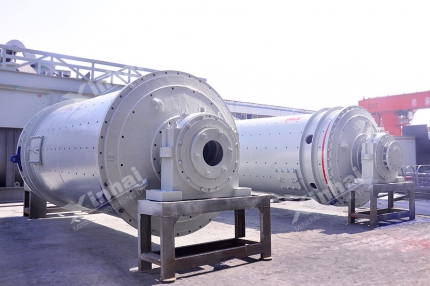The preparation stage of a concentrator has a great influence on the indicators of the whole ,mineral processing flow, especially the grinding and classification stage. The effect of this process will directly affect the subsequent operation process. But what are the indicators used to measure this stage? Generally, the effect of grinding and classification stage is measured by grinding fineness of grinding mill, the productivity of grinding mill, the efficiency of grinding and classification stage. In this paper, we will elaborate on these indicators and their influencing factors one by one.
Use the table of contents below to navigate through the guide:
01Grinding fineness of grinding mill
Generally, use standard screen (200 mesh) to screen the product fineness and count the percentage of the product in the total. For example, when the grinding fineness -200 mesh accounts for 50% or -0.074mm accounts for 50%, the higher the percentage, the finer the product.
For most ores, the finer the grinding, the more enough the dissociation of the useful minerals is, thus increasing the recovery of the useful minerals. Therefore, under certain processing capacity, the grinding fineness will be increased as far as possible. In addition, properly relaxed grinding fineness can reduce energy consumption and improve productivity under the premise of ensuring the mineral processing index.
There are many factors that affect the grinding fineness, including the nature of raw ore, the hardness of ore, the size of crushing particle, the size of ore feed, the size of water at the feeding end and the discharging end of grinding machine, the grinding concentration, the filling rate and size ratio of steel balls, the size of the opening of classifier and the size of sand return ratio, and so on. Some minerals are easy to produce mud grinding under the overgrinding, so grinding fineness is not the finer, the better. Generally, the grinding fineness is standard if the majority of useful mineral achieve monomer dissociation.

02Productivity of grinding mill
The production capacity of the grinding mill can be subdivided into two parameters, namely the production capacity of the grinding mill and the volume capacity of the grinding mill per unit.
• Production capacity of the grinding mill per unit
This parameter refers to the amount of ore processed by the grinding mill per hour at a given ore feed and product size, t/(unit •h).
• Volume capacity of the grinding mill per unit.
This parameter is usually expressed by the q and refers to the average value of ore processed by the mill by its effective volume per unit under the unit time, ton/(cubic meter · hour), which is one of the important indexes to measure the work of the grinding mill. In the case that the size of ore feeding and product particle are similar, this indicator can be used to judge the ore properties and operating conditions. The production capacity of the grinding mill can be improved effectively by increasing the capacity per unit.

The influencing factors of these two parameters mainly include the feeding nature into the grinding mill, the particle size requirements of the product, the type and model of the grinding mill, the speed of the grinding mill, the grinding medium, the filling rate of steel ball and so on. To increase the output of the grinding machine, we can reduce the grain size of the grinding machine and remove the surrounding rock and rock in advance. That is to improve the quality of the ore, which can improve the grindability of the ore, increase the grinding amount, and reduce the energy consumption while increasing the output of the grinding machine.
03Efficiency of grinding and classification stage
The efficiency of grinding and classification stage mainly refers to the grinding efficiency, that is, the amount of ore processed by electric energy per kilowatt · hour consumed, also known as the unit productivity of the grinding mill. Specifically speaking, it is the ton of the specified level (usually 200 mesh) products obtained by the electric energy consumption of 1 kilowatt · hour. The unit power consumption productivity can reflect the working condition of the grinding mill from the energy consumption in a real sense, so which is often used to calculate and select the grinding machine.
The factors that affect the grinding efficiency include the proportion of steel balls added for the first time, the quality of the steel balls, the way of adding the steel balls, the filling rate of the steel balls, the grinding concentration, the ratio of sand-returning ratio and the efficiency of the classifier, the effect of grinding aid and so on.

At the beginning of the construction of the concentrator, the determination of the three indicators should be based on the test and design. It is suggested to consult with the manufacturers who can independently produce the mineral processing equipment and have the design qualification of the concentrator, so that the equipment and indicators in the grinding grading stage can be compatible with each other and reduce the indicator error after the production.
In actual production, the above three indicators can effectively judge the running condition of the concentrator in the grinding and classification stage. The grinding classification operator, should know how to use the three process indicators to determine the effect of grinding classification stage, and find out the factors influencing indicators through the abnormal index screening problem, so as to guarantee the smooth running of the concentrator.


 marketing@ytxinhai.com
marketing@ytxinhai.com  0086 13810327080
0086 13810327080 






































































































 CHAT
CHAT MESSAGE
MESSAGE


.jpg)


